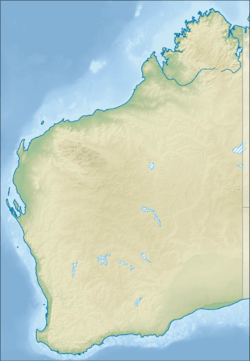Lake Grace South facts for kids
Quick facts for kids Lake Grace South |
|
|---|---|
| Location | Great Southern, Western Australia |
| Coordinates | 33°17′S 118°24′E / 33.283°S 118.400°E |
| Type | Wetland |
| Basin countries | Australia |
| Surface area | 56 km2 (22 sq mi) |
Lake Grace South is a special kind of watery area called a wetland. It's found in the Great Southern region of Western Australia. This lake is part of a bigger group of lakes known as the Lake Grace System.
Lake Grace South is located in the Shire of Kent. It's also part of a natural area called the Western Mallee subregion, which is within the larger Mallee region. The lake covers a large area, about 56 square kilometers. That's roughly the size of 5,600 football fields!
This lake is very important. It's one of four lakes in the area that are listed as a "DIWA-listed wetland of national importance." This means it's recognized as a really special place for nature in Australia.
Contents
What is a Wetland?
A wetland is an area of land that is either covered by water or has water very close to the surface for at least part of the year. Think of it like a mix between land and water!
Why are Wetlands Important?
Wetlands are super important for many reasons:
- Home for wildlife: They provide homes for many different plants and animals, especially birds, fish, and insects.
- Natural filters: They help clean the water by filtering out pollution.
- Flood control: They can act like sponges, soaking up extra water during heavy rains and helping to prevent floods.
- Climate helpers: They store carbon, which helps fight climate change.
What Does "DIWA-Listed" Mean?
DIWA stands for the "Directory of Important Wetlands in Australia." When a wetland is "DIWA-listed," it means it's been identified by the Australian government as a very important wetland.
Why is National Importance a Big Deal?
Being listed as a wetland of "national importance" means:
- It has special features that are rare or unique.
- It supports a lot of different plants and animals, especially those that are endangered or only found in Australia.
- It plays a key role in the environment of the country.
This recognition helps protect these wetlands so they can continue to be healthy and support wildlife for many years to come.


